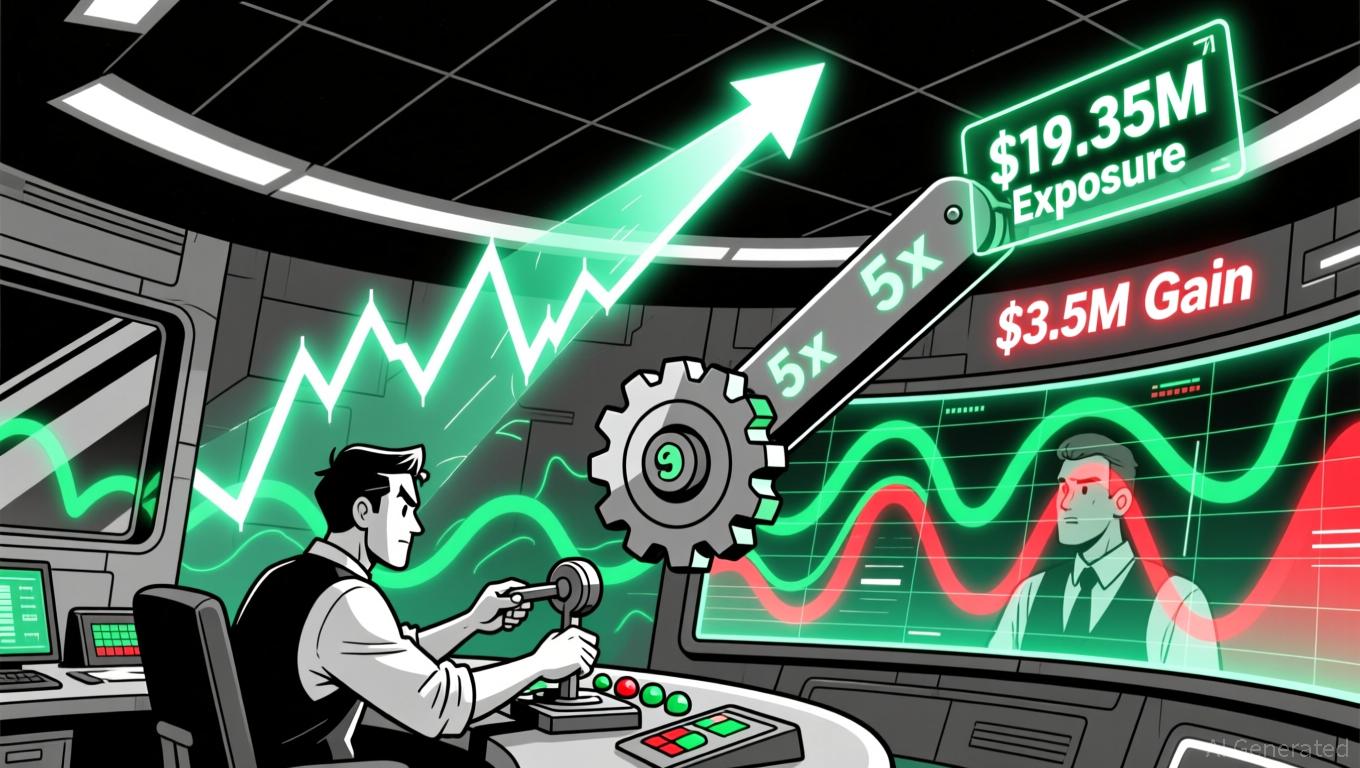Tom Lee warns of liquidity crunch after Oct. 10 crash
- Trading firms suffered losses and cut activity, compounding the crypto market’s decline after Oct. 10.
- A technical flaw on Binance caused mass liquidations, prompting a user refund and debate over market manipulation.
- Analysts expect more stress before stabilization, with some blaming natural unwinding and others citing price manipulation.
The cryptocurrency market has experienced sustained downward pressure since Oct. 10, with analysts attributing the decline to liquidity constraints among trading firms and a technical malfunction at a major exchange, says Tom Lee.
Tom Lee of BitMine told CNBC that large trading firms serving as liquidity providers faced significant capital losses during the Oct. 10 market crash. These firms, which help maintain price stability across exchanges, were caught off guard by the sudden capital withdrawal, according to Lee.
When trading firms lose capital, they reduce activity by cutting trading operations, limiting risk exposure, and selling assets to raise cash, Lee stated. This selling pressure creates additional downward force on prices, which in turn can trigger further asset sales, he explained.
Lee described the pattern as a prolonged unwinding process following the crash. He noted that similar events in 2022 required approximately eight weeks to stabilize. The current market is six weeks into the stress cycle, suggesting additional time may be needed before finding steady support, according to Lee.
Tom Lee says October crash a significant blow
A separate technical incident may have intensified the selloff, according to market observers. During the Oct. 10 crash, the stablecoin USDe briefly displayed a price significantly below its intended peg on one exchange while other platforms showed it near its target value. The exchange’s internal oracle system accepted the lower price as valid, triggering automatic liquidations across numerous accounts.
Lee told CNBC the problem stemmed from an automation flaw in which the exchange relied on internal pricing rather than aggregating data from multiple sources. He compared the situation to a margin call executed based on incorrect input data.
The liquidations spread across platforms, affecting nearly two million accounts, many of which had been profitable minutes earlier, according to reports. The exchange did not disclose which firms were impacted by the malfunction.
Screenshots from Oct. 10 and Oct. 11 showed the depeg event occurring on Binance. Following the incident, Binance announced it would refund users who were incorrectly liquidated and stated it had adjusted systems to prevent similar failures.
Lee characterized the glitch as a code error comparable to past structural failures in other markets where a single problem triggers cascading effects.
Mike Alfred, a Bitcoin investor, stated on social media that market participants are using futures and derivatives to drive prices lower, claiming the intent is to force out traders who entered positions at higher price levels. Lee expressed agreement with this assessment, sparking debate among market observers.
Critics of this theory argued that such claims emerge regularly during market declines and suggested the selloff reflects natural unwinding after heavy buying during peak prices left many traders overexposed. Others questioned why manipulation theories focus exclusively on price declines rather than considering that markets can fall when participants reassess risk or exit positions during periods of heightened concern.
The debate reflects heightened tension in the cryptocurrency market during the current downturn.
Disclaimer: The content of this article solely reflects the author's opinion and does not represent the platform in any capacity. This article is not intended to serve as a reference for making investment decisions.
You may also like
Vitalik Buterin Backs ZKsync: Accelerating Ethereum’s Expansion and Advancing Layer 2 Solutions
- Vitalik Buterin endorses ZKsync's Atlas upgrade, highlighting 15,000 TPS, $0.01 fees, and bridging Ethereum's Layer 1/2 liquidity. - ZK Stack innovation reduces capital fragmentation while Airbender prover enables 2-GPU L1 block proofs, advancing Ethereum's scalability. - ZKsync now holds 15% Layer 2 TVL with 50% ZK token surge, but faces 60x performance gaps and competition from Arbitrum/Optimism. - Upcoming Fusaka upgrade targets 30,000 TPS by December 2025, while Kohaku privacy framework addresses ado
Investment Prospects in Layer 2 ZK Technologies After the ZK Atlas Enhancement
- ZK Atlas Upgrade (Oct 2025) boosts blockchain scalability via modular ZK solutions, enabling 15,000–43,000 TPS with $0.0001 per transaction costs. - Ethereum gas fees dropped 90%, TVL in ZK rollups hit $3.5B by 2025, with Deutsche Bank adopting ZK-rollups for institutional settlements. - Deflationary tokenomics drive capital efficiency: buybacks, burns, and staking rewards attract institutions, supported by $15B in Bitcoin ETF investments. - Analysts project 60.7% CAGR for ZK Layer-2 solutions, reaching
ZEC rises 6.32% in 24 hours as Hyperliquid holds a $19.35M long position
- ZEC surged 6.32% in 24 hours to $538.2 on Nov 22, 2025, despite a 9.7% weekly drop, with 36.25% monthly and 879.76% annual gains. - A $19.35M ZEC long position on Hyperliquid (5x leverage) shows $3.5M unrealized gains, highlighting institutional bullishness amid price volatility. - The leveraged position underscores amplified risks/rewards, with narrowing gains signaling market uncertainty and the need for cautious monitoring of macroeconomic/on-chain trends.

Bitcoin Updates: Billions Flow Out of Bitcoin ETFs While Stablecoins Strengthen as Core of Finance
- BlackRock's IBIT Bitcoin ETF recorded a record $523M outflow, pushing November's total U.S. spot Bitcoin ETF redemptions to $2.96B amid Bitcoin's 30% price drop. - Analysts link the exodus to weak fundamentals and macroeconomic uncertainty, with ETF outflows and long-term holder sales tightening liquidity and eroding investor confidence. - BlackRock filed for an Ethereum staking ETF as stablecoins surge in cross-border finance, processing $9T in 2025 payments while Bitcoin ETFs face sustained outflows an

